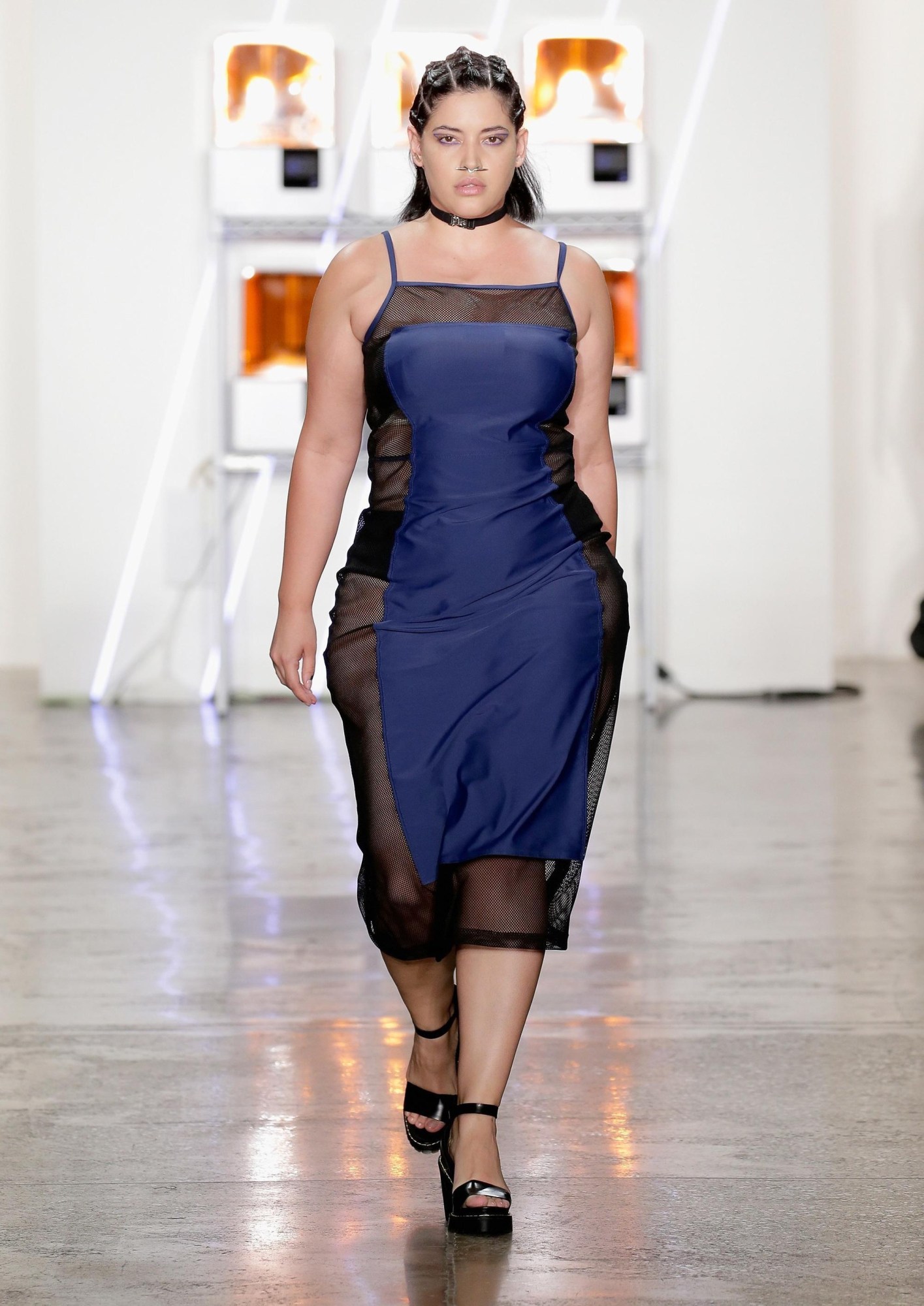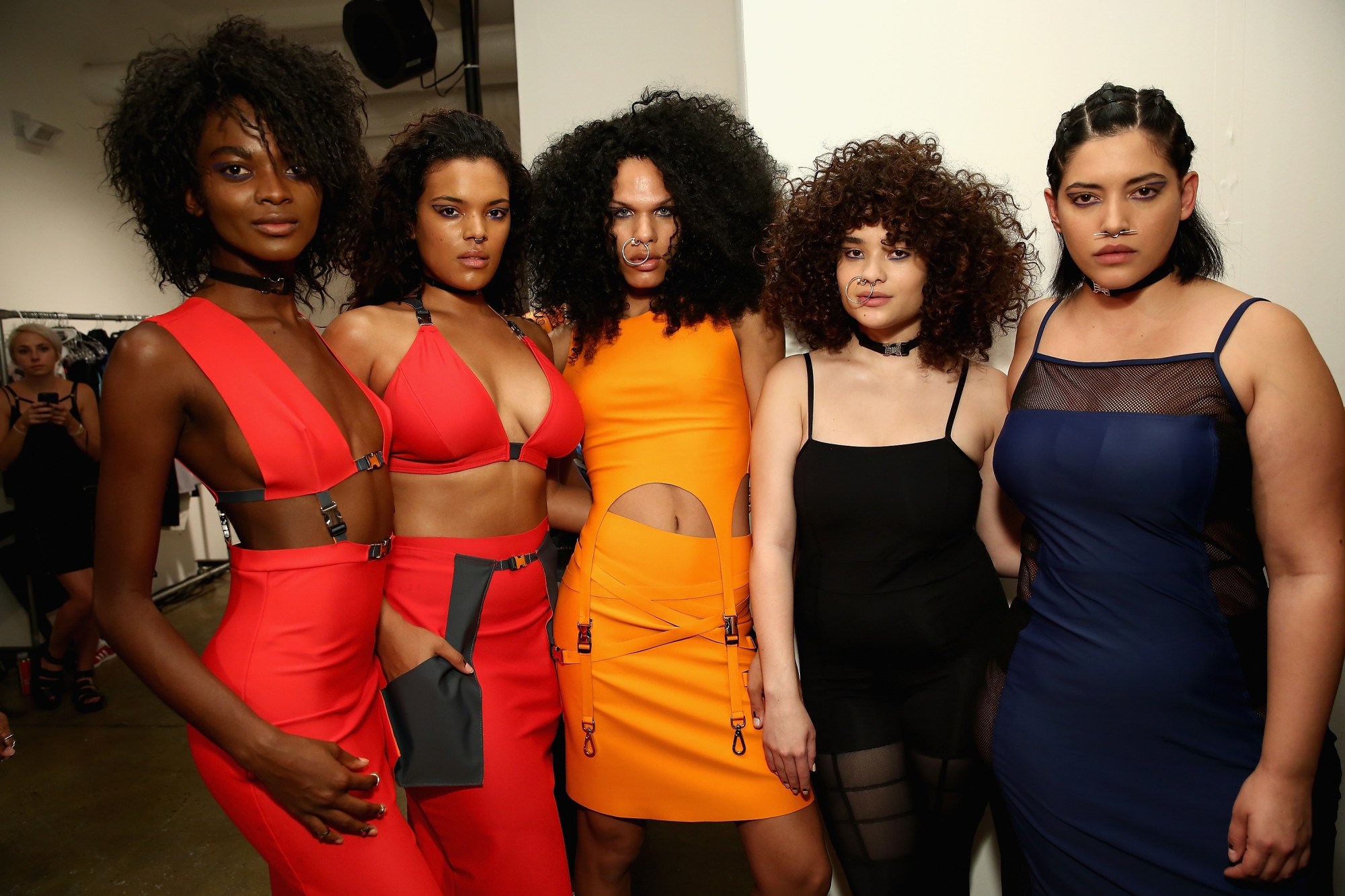Plus size inclusion at NYFW has always been minimal.
When I started out in the New York fashion industry five years ago, working in a Condé Nast fashion closet, I was the only person above a size 6 in the entire internship program. Even though I couldn’t fit into the samples passed down to the interns, I would still try and interpret runway looks for my shape and not let my size define my fashion identity. Still, looking at the runways, I never saw women who looked like me.
Today, I attend New York Fashion Week every season as a correspondent for several publications and report on the shows knowing that my body type will still most likely not be represented. Not only are women my size not visible on the runway, but most fashion brands in the U.S. do not offer any clothing in store that will accommodate my curves. Though most designers do not create clothes past a size 12 or 14, we have a lot of fast fashion brands like ASOS, H&M, and now Zara that offer a variety of fashion-forward looks in our size range. If mass-market brands can catch on to the demand for larger sizes, when will major NYFW designers begin to take notice?
Well, I’m over the moon to report that the New York spring/summer 17 shows were more body inclusive than ever.
Chromat is one of the most visible brands paving the way for a more inclusive fashion industry. Not only did Chromat designer Becca McCharen send an assortment of curvy women like Denise Bidot, Iskra Lawrence, and Sabina Karlsson down her spring runway, but she also chose trans model standout Leyna Bloom to close the show. It’s moments like this that spur other designers to represent different populations on and off the runway.
Established, more commercial American brands J. Crew and Tracy Reese made a statement this season by including women of all sizes in their fashion week presentations. J. Crew cast employees and friends of the brand (aged 13 to 70) to show their spring/summer 17 looks. And Tracy Reese announced she will be extending selections of her designs to a size 18 and 2x in order to better represent her diverse customer.
This isn’t the first season different body types have appeared on the runway in New York. Last year, Chromat and fellow breakout brand Zana Bayne both included a range of bodies in their castings, as they have since their earliest collections. During the spring/summer 16 New York shows, Project Runway winner Ashley Nell Tipton debuted her first plus-size collection. That same season, designer Sophie Theallet had plus-size supermodel Candice Huffine walk her runway and curvy style icon Beth Ditto closed the Marc Jacobs show.
But simply adding one curvy model to a fashion week show does not make a brand inclusive. Designers need to extend the in-store size ranges of their products if they’re going to create real change off the runway.
Backstage at Chromat, I spoke to model and body-positivity advocate Iskra Lawrence about what it meant to walk in her first-ever runway show this season. As a size-14 model with an Instagram following of 2.5 million, Iskra’s runway debut was a big step forward for plus-size visibility. “It’s amazing to know that there are people out there like Becca [McCharen] who want to take risks and use different girls,” she said. “Every woman deserves to be in fashion and to able to see some representation of themselves on the runway. For so long, the industry has been elitist pertaining to size and color, and it’s just not fair! The beauty of humans is that we are different. Different is exciting.”

Model Denise Bidot, who also walked in the Chromat show, agreed that “being able to see someone you relate to in the media is so important. It allows you to believe that you too can achieve your dreams.” And she is convinced that the fashion industry can do more: “Designers hold a priceless role in fashion. They have the ability to make whatever size they want, so I don’t understand why so many choose to not include different sizes on the runways. I have seen a shift since I walked my first show in 2014, but I think we can do better.”
“I just feel like diversity is how our society was built so why wouldn’t you design things for everyone?” echoed Sabina Karlsson, who walked in two shows this season, including Chromat. “I do understand that some companies really want to focus on a certain group or certain sizes, I totally get that, but I think there is a winning point for everyone. If more brands began to include a larger size range they will be selling more clothes, making more money, and everyone is going to be happier. I think it’s a no brainer, and a win-win situation for everyone involved.”
Designers often claim that making plus-size clothing will not only be more expensive, but also that there is more work involved with the fitting process. When asked why more designers don’t design for plus size, designer Christian Siriano (who sent five plus-size models down his spring runway), spoke openly, claiming, “I think they can. I just think it’s a lot of time and a lot of work. The thing is, if you’re a designer, then you want to constantly push yourself and your designs.” I want all those designers to know that the time it takes to invest in extending designs to the plus-size market is well worth it! There is an $18 billion industry waiting to be served and the women are more eager than ever for fashion inclusion.
But, like Bidot says, designers in New York are making strides towards becoming more body inclusive, partly thanks to the power of social media.
Platforms like Facebook and Instagram are making it easier than ever for women to speak out about not being represented. This year, plus-size supermodel and body activist Ashley Graham launched the F* THIS campaign with Canadian retailer Addition Elle to demand full access to fashion for plus-size women. And a few weeks ago, model-activists Clementine Desseaux and Charli Howard kicked off The All Woman Project, a multi-platform body-positive editorial, video, and social media campaign. Desseaux and Howard told i-D, “The industry needs to stop associating beauty with a size, or putting women into categories because of their size, color, or sexuality.” They hope that their combined social media following of 3.5 million will help them provoke wider change: “We can only achieve a change in fashion if more people create campaigns like this and make diversity the ‘norm,’ rather than a trend.” And since 67% of US women are size 14 to 34, there is not only a population to be served but money to be made.
It is refreshing to see that more diverse bodies are beginning to be represented in fashion — and that women are raising their voices to challenge ingrained fashion industry standards. But true industry-wide change can’t come soon enough.
I often wonder how my own self-acceptance journey would have been affected if I’d grown up with more body-positive role models in the media and on the runways. It is such a privilege to have outlets where I can encourage women to be confident and love their bodies just the way they are. But when it comes to fashion I want women to know that there are no set rules to live by. Being a size 20 does not mean you can’t wear a body-hugging dress or a mini skirt — and those pieces should be available to you.
I hope, one day, to be able to watch a show in New York and not only feel represented by the models on the runway, but also to be able to purchase the same dress as the size-2 woman sitting next to me.
Credits
Text Margie Ashcroft
Photography Getty Images for Chromat
